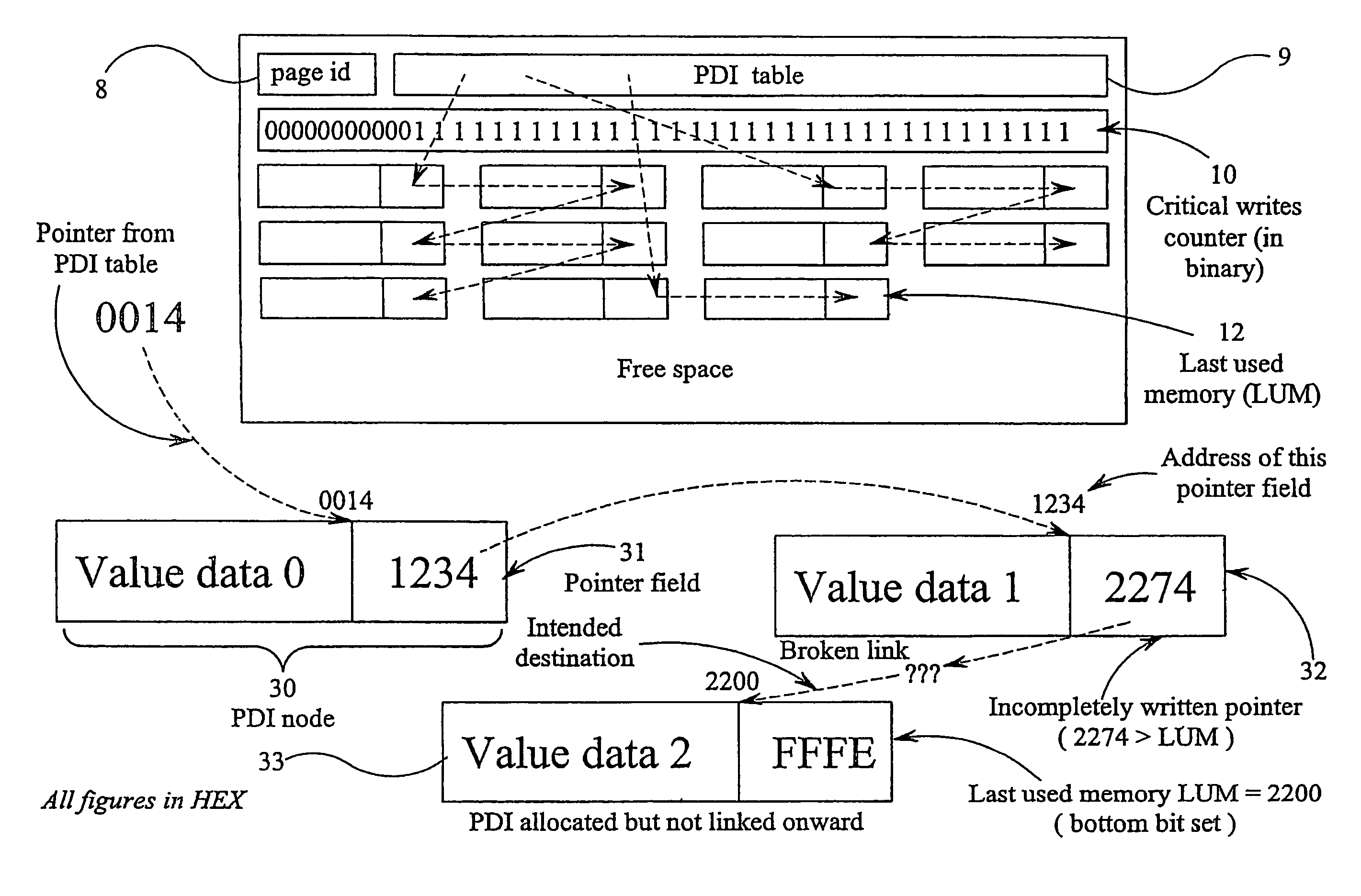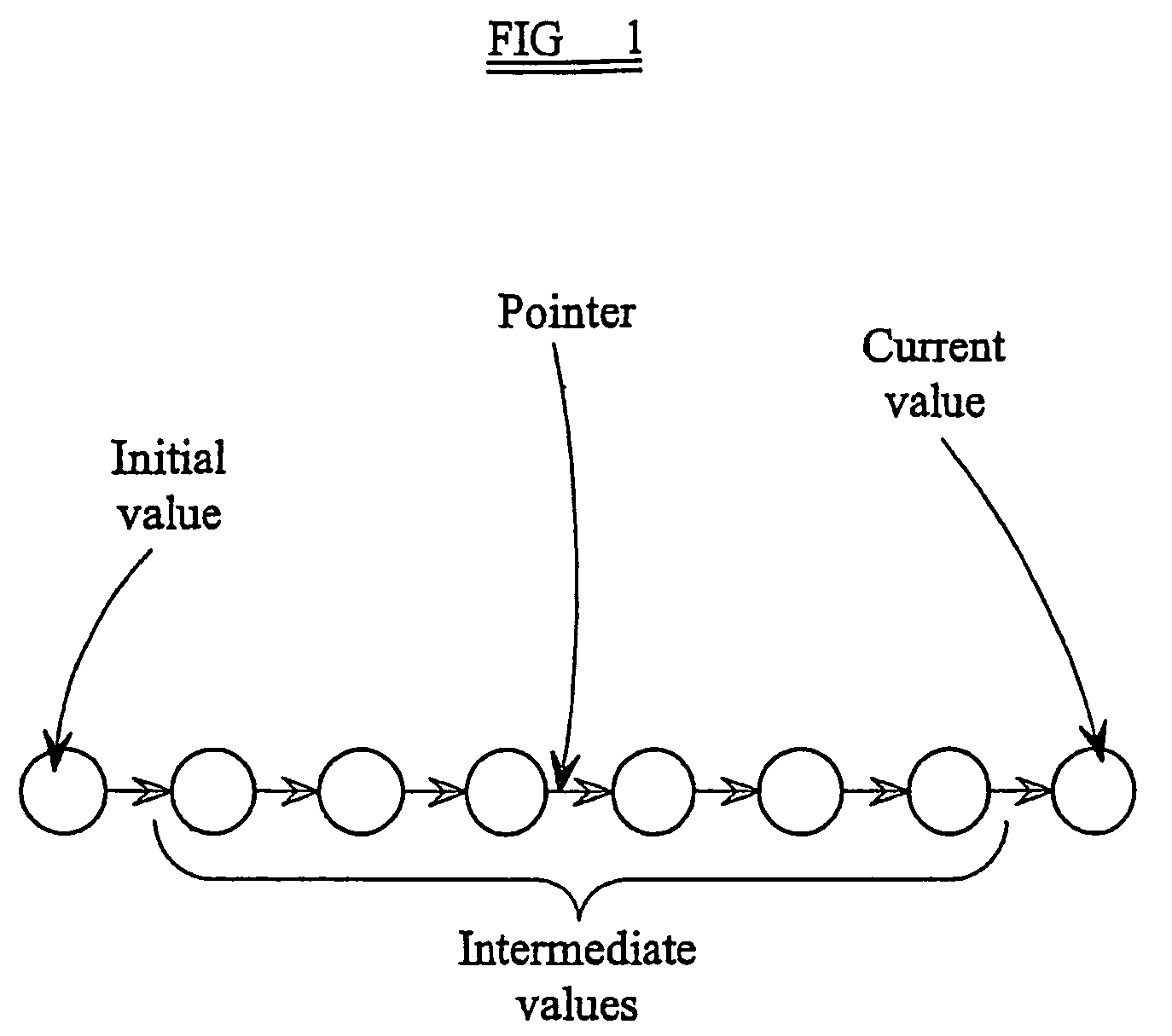Method of and apparatus for detecting an error in writing to persistent memory
a persistent memory and error detection technology, applied in the direction of memory adressing/allocation/relocation, instruments, fault response, etc., can solve the problems of flash memory quickly wearout, memory will eventually wear out, and long tim
- Summary
- Abstract
- Description
- Claims
- Application Information
AI Technical Summary
Benefits of technology
Problems solved by technology
Method used
Image
Examples
Embodiment Construction
[0047]FIG. 2 illustrates a smart card of the “contactless” type for cooperating with a card reader to transfer data. The card 1 has embedded in it a computer 2 and a flash memory 3 shown as comprising several pages or segments. The computer 2 comprises a central processor unit (CPU) 4 provided with a working random access memory (RAM) 5 and an input / output interface (I / O) 6 for contactless communication with a card reader. The card 1 does not have an internal power supply but instead relies on an external power supply 7 provided within the card reader (not shown). The computer 2 and the memory 3 are thus only powered when the card 1 is correctly inserted in a card reader.
[0048]The flash memory segment illustrated in FIG. 2 is configured to act as a non-volatile memory for persistent data items (PDIs). Thus, whereas data which does not need to be stored in the absence of power uses the working RAM 5 which is volatile, PDIs whose values must be preserved in the absence of power are st...
PUM
 Login to View More
Login to View More Abstract
Description
Claims
Application Information
 Login to View More
Login to View More - R&D
- Intellectual Property
- Life Sciences
- Materials
- Tech Scout
- Unparalleled Data Quality
- Higher Quality Content
- 60% Fewer Hallucinations
Browse by: Latest US Patents, China's latest patents, Technical Efficacy Thesaurus, Application Domain, Technology Topic, Popular Technical Reports.
© 2025 PatSnap. All rights reserved.Legal|Privacy policy|Modern Slavery Act Transparency Statement|Sitemap|About US| Contact US: help@patsnap.com



